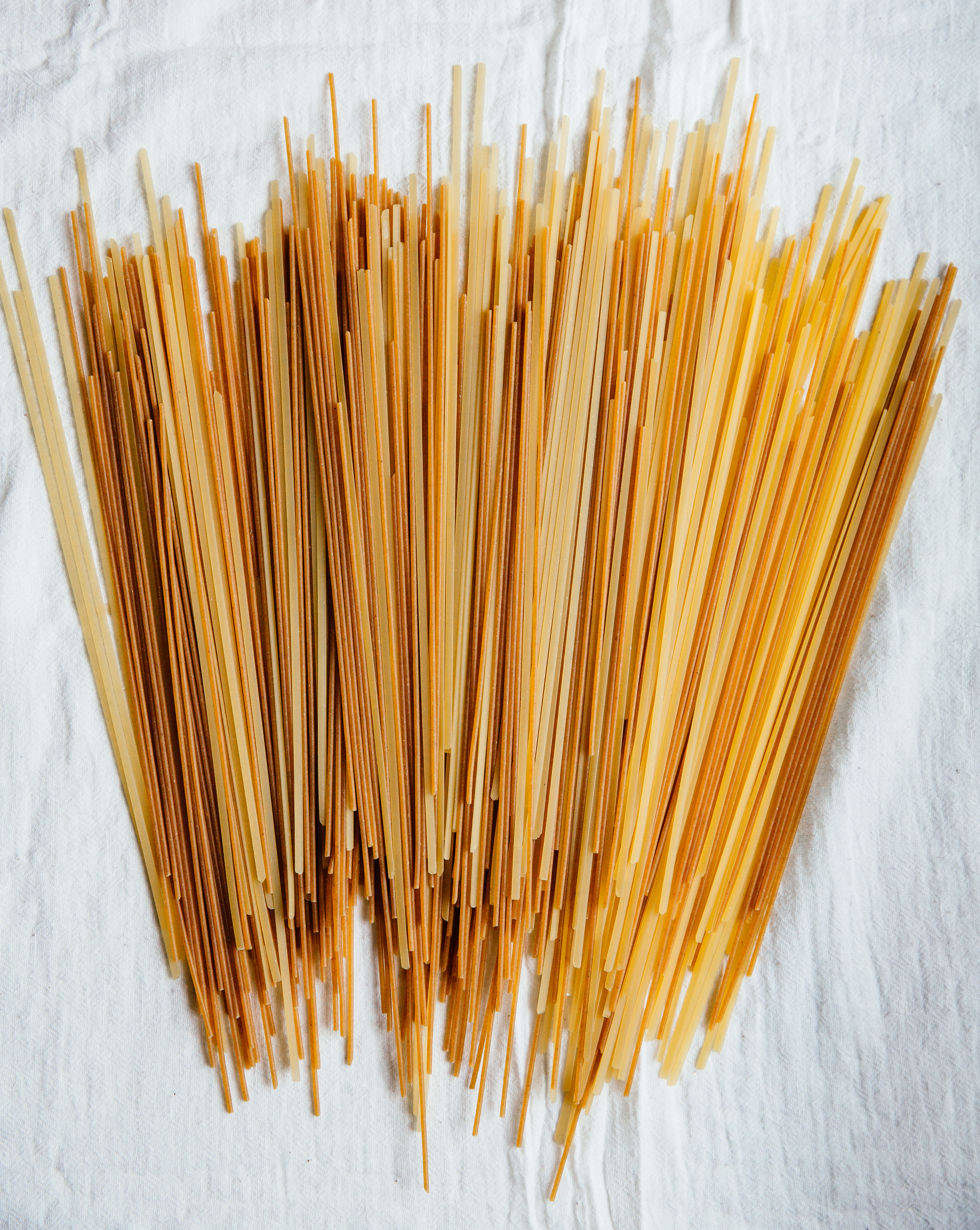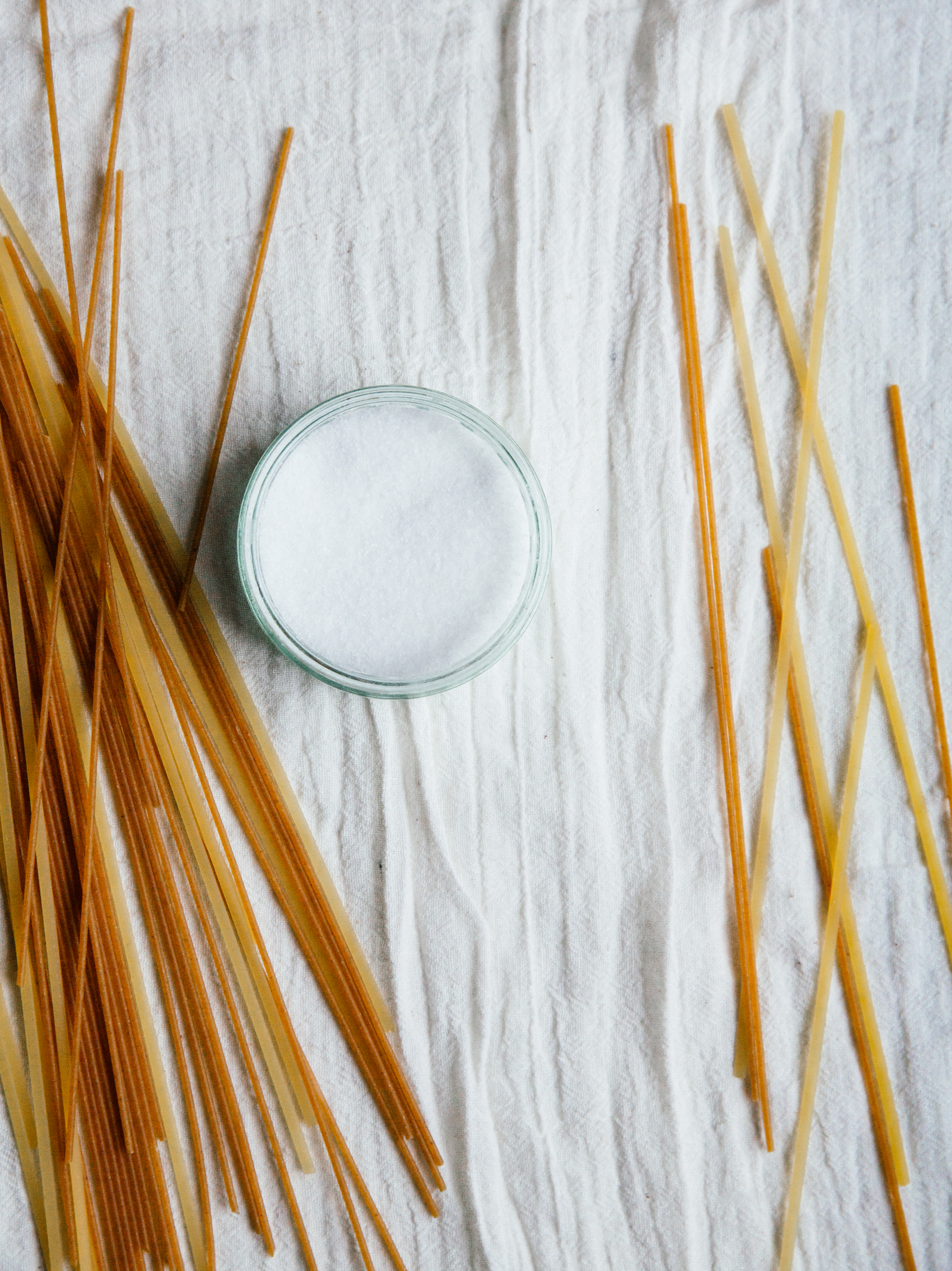Delicious, comforting and endlessly versatile, pasta is a favourite with good reason. Here’s how to always cook it to perfection.

My favourite dish of all time? Pasta, hands down. Always pasta. I may go through phases where I’ll develop a crush on, say, a curry, or a colorful rice salad and there are times when all I think about and all I make is soup. Yet, pasta is always number one, even these days which are all consumed by trying out different seeds & grains and pairing them with delicious vegetables and all sorts of crunchy things. Still, because of all these occasional crushes and the fact that I can never eat pasta in moderation, it is relatively rarely featured in our meals- and in here. Yet the love is there and it is very much real.
What I mostly love about it is how wonderfully versatile and interesting it can be. So many different shapes, such variety in sauces- and with just a couple steps, you’re left with a plate that is just heavenly. And we really do need to pay attention to these steps- there’s few things I despise as much as overcooked or under seasoned pasta, mostly because they’re both so easy to not mess up.

- Start with a big pot filled with water. Pasta needs plenty of space in order to cook comfortably, without sticking. Measure a litre of water for each portion of dry pasta ((100gr) and you’ll be alright.
- Salt! Super important when cooking anything and certainly crucial here too: not a pinch, not a teaspoon, more! One pack of pasta (500gr) needs two heaping tablespoons and there’s two reasons why: first of all, we need to season the pasta before it is combined with the sauce. Also, salt makes our water boil faster, which we’ll need, so when the cold pasta is added it does not stop the boiling.
- Cook it al dente! I usually take the pasta off the heat and drain it about a minute before what is advised in the pack, as it will also cook when tossed with the sauce.
- Once the pasta is cooked, don’t drizzle it with olive oil or butter, as this will prevent the sauce from sticking to the pasta. Simply drain it and toss it with the sauce (which is why it’s also a good idea to prepare the sauce in a large, heavy pan).
- Keep about 1/2- 3/4 cup of the pasta water. If your sauce is too thick, it will help loosen it and if your pasta becomes sticky, after being tossed with the sauce, you’ll easily refresh it.
- Optional, but worth the small effort: serve your pasta in warm (not hot) plates (unless you’re making a pasta salad of sorts)- just place your plates in the oven, in very low temperature before serving and simply remove them (carefully!) when ready to plate.
Once we’ve cooked the perfect (aka al dente) pasta, we’ll also need an equally sauce to go with it. I love sauces which are simple- few, very good quality ingredients, but still nothing too fancy, or unidentifiable. A thick tomato sauce finished off with fresh basil- a staple of our summer holidays- always makes me happy; my uncle’s spaghetti with tuna, capers and lots of garlic puts a smile on my face; homemade pesto, made with the freshest greens, the crunchiest nuts and the saltiest parmesan is one of my favourite things to make and is always in stock, in our fridge or freezer; a classic carbonara -possibly my favourite pasta sauce- is always nothing short of a dream (in fact, that’s exactly what it is for me, as I have never ever been able to make it right. Any tips would be more than welcome.).
What I’m trying to say is, yes to grains and seeds and nuts, yes to all that; but honestly, really, an even biggesr, louder yes to pasta. I can’t think of a more delicious, comforting, easy dish, one that each cook can really make their own. So let’s cook it right, let’s keep our ingredients fresh and simple and our sauces deliciously deep and deceptively easy. Let’s celebrate pasta.